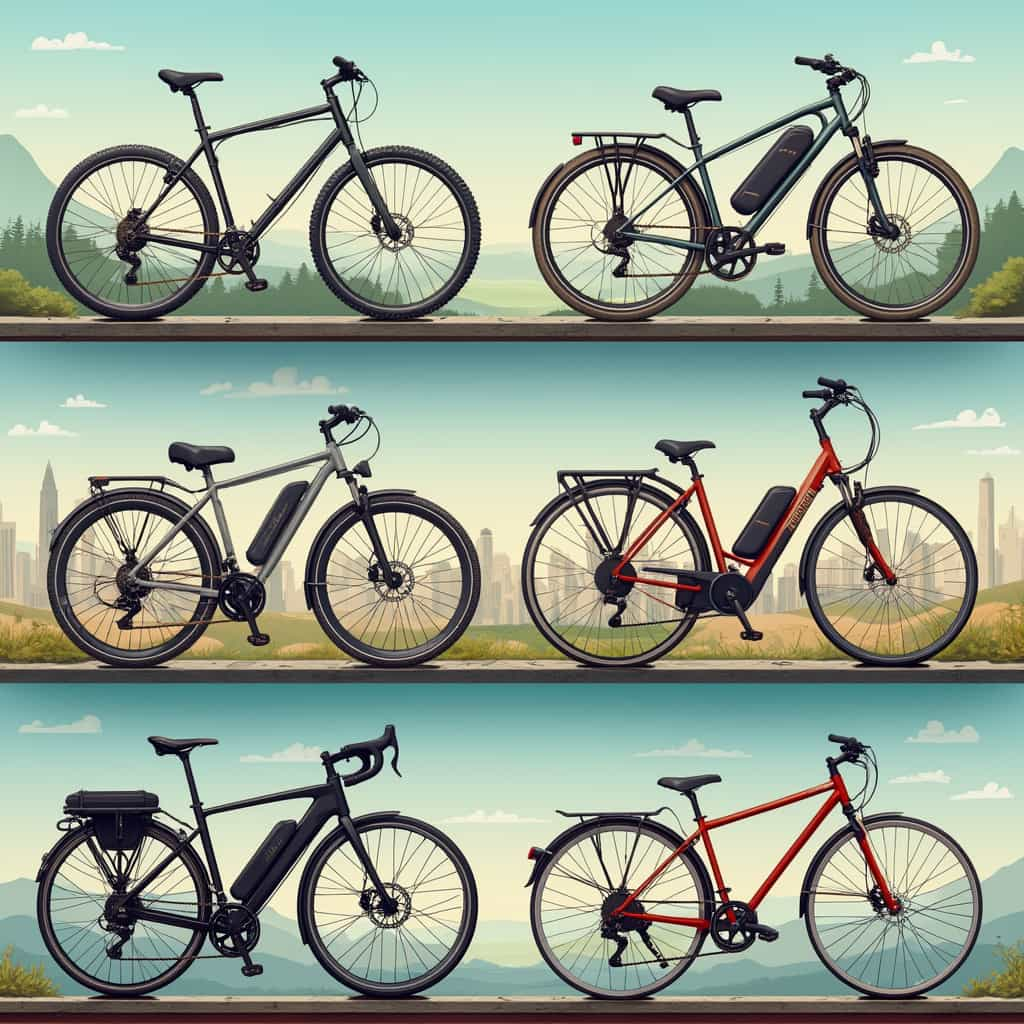In the evolving landscape of personal transportation, bicycles remain a steadfast choice for commuters and enthusiasts alike. With the advent of electric bicycle technology, the options for cyclists have expanded significantly, offering diverse features and capabilities across various terrain types, including road, cross, and mountain bikes.
Traditional bicycles, known for their simplicity and reliability, have been a cornerstone of personal transport for centuries. They can be broadly classified into three categories: road bikes, which are designed for smooth pavements and speed; mountain bikes, crafted for rough and rugged terrains; and hybrid or cross bicycles, which offer versatility across different surfaces.
When considering a traditional bicycle, crucial components to examine include the frame material, which can vary from lightweight aluminum to durable carbon fiber. The gears, usually ranging from single-speed to 21-speed or more, and the type of brakes, such as disc or rim brakes, are essential for optimal performance depending on the riding conditions. One must ensure the quality of assembly, checking for secure nuts and a properly aligned frame to ensure safety and longevity.
Electric bicycles, or e-bikes, have surged in popularity, especially in urban areas where effortless commuting is a priority. These bicycles integrate a motor and a battery, assisting the rider’s pedaling efforts. Key specifications to assess in e-bikes include the motor power, which typically ranges from 250W to 750W, the battery life and capacity, measured in watt-hours, and the range offered on a single charge.
The rise of e-bikes has introduced new considerations, such as the weight of the bicycle due to its electric components. Consequently, the balance between power and portability becomes a crucial factor in the decision-making process. Furthermore, many e-bikes offer advanced features like regenerative braking systems and smartphone connectivity for tracking rides and managing battery usage.
Guarantees and warranties provided by manufacturers can serve as a determining factor for both traditional and electric bike purchases. Most companies offer a minimum one-year warranty on the bike frame, with additional options for extended coverage on components like the drivetrain and electric motor. It is vital for buyers to scrutinize what these warranties entail and the conditions under which they apply.
Before making a purchase, whether a traditional or electric bicycle, a thorough inspection is recommended. For traditional bikes, this includes checking tire pressure, examining the brake functionality, and ensuring the drivetrain is well-lubricated and smooth. For e-bikes, verifying the battery charge, motor functionality, and software updates should be part of the evaluation process.
For those in the market for a bicycle, resources such as the internet and specialized publications are invaluable. Websites like BikeRadar and Cycling Weekly offer in-depth reviews and comparisons of the latest models, while platforms like Electric Bike Review provide exhaustive insights into the e-bike segment. Additionally, forums and community groups offer anecdotal experiences that can inform potential buyers of common issues or standout features of certain models.
Geographical trends in bicycle purchases reflect cultural and infrastructural influences. In Europe, where cities like Amsterdam and Copenhagen prioritize cycling through extensive bike lanes, traditional and e-bike sales are notably high. In contrast, North America has seen a recent surge in e-bike popularity as cities begin to embrace sustainable transportation solutions.
Alternative mobility solutions are becoming increasingly mainstream, with options ranging from hybrid and fully electric cars to scooters and motorcycles. Electric vehicles, propelled by advancements in battery technology, continue to gain traction as environmental concerns drive consumers towards cleaner energy. The integration of smart technology into these modes of transport, allowing for enhanced safety and efficiency, presents a glimpse into the future of personal mobility.
You may also like
Hybrid and Electric Cars: Analyzing technical features
This article delves into the intricacies of hybrid and electric cars, analyzing technical features, accessory warranties, and potential pitfalls before purchase. A comprehensive comparison of various hybrid and electric car options is presented, highlighting the best resources for informed buying decisions. Global trends and regional purchase patterns are also examined.
Thermal and Electric Motorcycles: Warranties and Regional Trends
This comprehensive article explores the technical specifications, additional warranties, purchase considerations, and market trends for thermal and electric motorcycles. Readers will gain insights into the advantages and disadvantages of each type, regional sales trends, and essential resources for informed purchasing decisions.
Guide to Choosing Between Thermal and Electric Scooters
As the scooter market continues to diversify, potential buyers are faced with the choice between traditional thermal scooters and modern electric alternatives. This article delves into the technical specifications, accessory warranties, and crucial pre-purchase checks for both types. It also compares popular models to help consumers make informed decisions, highlighting regional purchasing trends and authoritative sources for guidance.
The Best Budget Electric Scooters
This article explores the top affordable electric scooters available in the market, detailing their technical specifications, advantages, and drawbacks. Pricing information and warranty details for each model are also discussed.
Les meilleurs scooters électriques économiques
Cet article passe en revue les meilleurs scooters électriques abordables disponibles sur le marché, en détaillant leurs spécifications techniques, leurs avantages et leurs inconvénients. Les informations sur les prix et les détails de la garantie pour chaque modèle sont également abordés.
